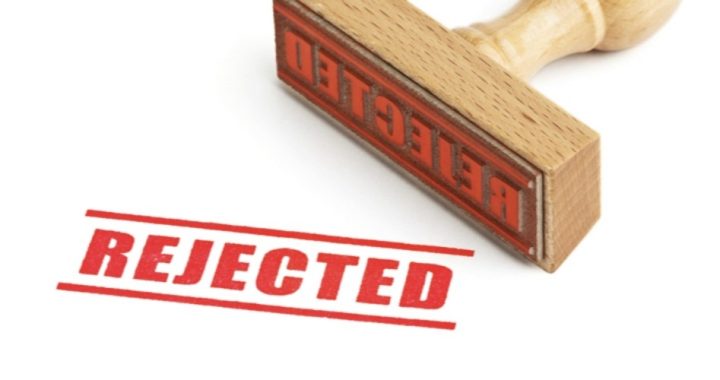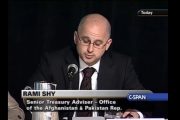
A spokesman for Minnesota Governor Tim Walz said on Friday that Walz’s request for federal funds to rebuild Minneapolis following the George Floyd-inspired riots was denied: “The Governor is disappointed that the federal government declined his request for financial support. As we navigate one of the most difficult periods in our state’s history, we look[ed] for support from our federal government to help us through.”
Walz wanted Trump to declare the state a major disaster area, allowing for federal funds to become available. He wrote: “I request that you declare a major disaster for the State of Minnesota because of the extensive fire damage to public infrastructure caused by civil unrest.”
He complained:
Beginning on May 27, individuals bent on destruction infiltrated otherwise peaceful protests and began to incite violence and vandalism.… Deliberately set fires were used to wantonly destroy local businesses, public buildings, and other property.
Nearly 1,500 businesses in the Twin Cities [Minneapolis/St. Paul] were damaged … with estimates of property damage … now upwards of $500,000,000….
The resources of local, tribal, county and state governments were already stretched thin….
We now face a $2.4 billion projected deficit.
FEMA explained its decision:
After a thorough review of Minnesota’s request for a major disaster declaration from extensive fire damage as a result of civil unrest in late May and early June, it was determined that the impact to public infrastructure is within the capabilities of the local and state governments to recover from.
In other words, drop dead. Or, as Representative Jeff Duncan of South Carolina expressed it: “Great news! Donald Trump has denied Minnesota’s disaster request to repair half a billion dollars in damage from the riots. Governors and Mayors who ordered police to stand down and watch their cities burn shouldn’t get a penny in taxpayer aid!”
The governor stated that he and his administration “surged available resources for immediate response” in the face of the crisis, adding that “we were able to quickly pivot to address the civil unrest while simultaneously maintaining our pandemic operations.”
Few familiar with the situation agree with that assessment, saying the governor and Minneapolis Mayor Jacob Frey allowed rioting to get out of hand. As Dana Ferguson, writing in the Twin Cities Pioneer Press, wrote: “Top law enforcement leaders … said earlier deployment of National Guard members to assist in response to protests, arson and looting in Minneapolis and St. Paul could have mitigated the damage that resulted.”
When Minnesota National Guard Adjutant General Jon Jensen received the call from Walz two days after the riots started, he said, “It immediately occurred to me that 200 wasn’t going to be enough.” The next day he ordered 700 national guardsmen to the area, but it wasn’t until Saturday that their presence began to be felt in quelling the rioting and the burning.
Initially, Minneapolis city officials reacted to the riots that followed the death of George Lloyd by supporting the rioters. In a joint statement by Minneapolis Mayor Frey and his chief of police they said, “The simple truth is that he [George Lloyd] should be with us this morning. Being Black in America should not be a death sentence.”
Such views were also held by city council member Jeremiah Ellison (son of radical Muslim Keith Ellison, the state’s attorney general) who advised the mayor not to interfere with the rioters vandalizing, looting and burning down police property. In a media interview he stated publicly that the mayor should “sacrifice” the third precinct station that was being attacked by radicals: “The focus of anger is the police and this building. If we let the crowd do its thing, we might spare the neighborhood.”
The crowd “did its thing,” resulting in $500 million in damage to more than 1,500 businesses, the second-most destructive event in U.S. history since the Rodney King riots in Los Angeles in 1992.
The crowning and perhaps most memorable event was Mayor Frey’s ordering the withdrawal of police from its third precinct station the day after the riots started. City Council member Ellison supported the mayor’s decision to abandon the station to the mobs, which had already broken through the station’s parking-lot barriers and had begun breaking the buildings’ windows.
At that moment in time there were 13 officers in the building who, when they saw the mob approaching, began texting their loved ones that their lives were in extreme danger. They made their escape and the building was torched.
It wasn’t until two days after the riots began that the mayor declared a state of emergency, and the governor formally called for help from the National Guard.
By Saturday Governor Walz finally realized that he had let things go too long, telling the media: “The absolute chaos — this is not grieving and this is not about a statement [about an injustice] that we fully acknowledge needs to be fixed — this is dangerous.”
By Saturday night the National Guard had reached full deployment, and the street violence began to subside.
The memorial service for George Lloyd was attended by the mayor, the governor, and an assortment of other radicals and revolutionaries who supported the rioters, including U.S. Senators Amy Klobuchar and Amy Smith, Martin Luther King III, the “reverends” Jesse Jackson and Al Sharpton, and, of course, U.S. Representative Ilhan Oman whose district includes Minneapolis.
Trump’s decision to protect U.S. taxpayers from paying for the damage inflicted by rioters unrestrained by local authorities is the right one, even in the face of the state being considered as a “swing” state in the upcoming presidential election.
Photo: paci77 / iStock / Getty Images Plus
An Ivy League graduate and former investment advisor, Bob is a regular contributor to The New American, primarily on economics and politics. He can be reached at [email protected].



